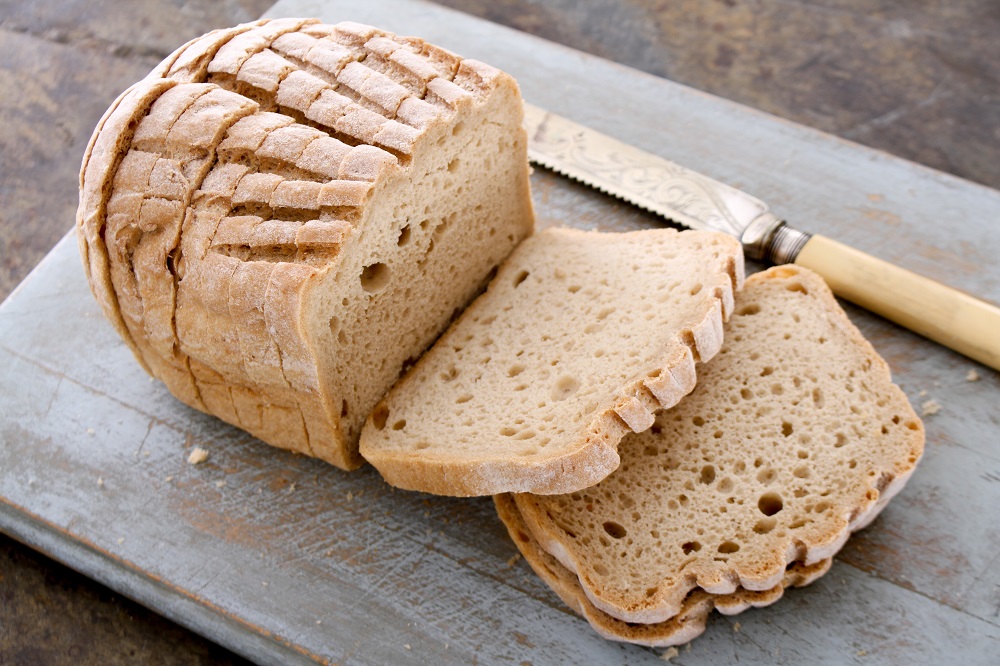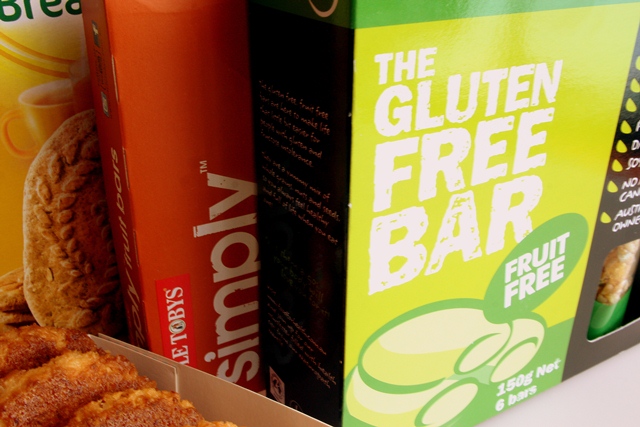- Home
- Blog
- Carbs, Sugars and Fibres
- 7 reasons why gluten-free doesn’t mean healthy
7 reasons why gluten-free doesn’t mean healthy
Written by Catherine Saxelby
on Friday, 20 July 2012.
Tagged: ancient grains, energy, fads, food labels, gluten, gluten-free, glycemic index, low GI, wellness

Gluten-free is the trendy food darling of the moment. I’ve never seen a wider choice of gluten-free pasta, bread, muffins, shortbread and muesli bars. Even gluten-free pizza and cookies. But if you don’t have to avoid gluten for medical reasons, I don’t believe these speciality foods will help you lose weight or digest your food better.
Sales of gluten-free products are booming
As Sue Shepherd, a dietitian who was herself diagnosed with coeliac disease 14 years ago, puts it: "When I was first diagnosed, manufacturers were reluctant to use a gluten-free label because it made products seem medicalised. Now it's seen as value adding."
And it's not just for strict medical reasons. "It's been estimated that for every person with a diagnosis of coeliac disease, there are 20 others who are eating gluten-free foods," Shepherd adds.
A gluten-free diet is the sole form of treatment for anyone who has coeliac disease or a skin condition called dermatitis herpetiformis. But they have to follow it diligently for life (not just when they feel like it).
Gluten can also be a trigger for bloating and tiredness in some people who don't have coeliac disease. Jessica Biesiekierski's research has recently showed that people with irritable bowel syndrome can benefit from a gluten-free or reduced-gluten diet. For the rest of us, it's a waste of time and money. Not to mention constipating!
Certainly there are folks who need gluten-free and do appreciate the variety of foods they never had in years past. When I was a student in the 1970s, the range of gluten-free foods was woeful and a torture to eat – the bread tasted like cake, crumbly and bleached white in looks. Gluten-free pasta didn't exist and Arnott's baked one special gluten free rice biscuit as a 'service' to those poor children who had coeliac disease (which in those days was taught as a childhood illness – this has vastly changed today).
7 reasons why gluten-free isn't always the answer
1. It won't help you lose weight
Despite the hype from tennis star Novak Djokovic, who swears by a gluten-free diet prior to a tournament final, gluten-free foods have around the same kilojoules, fat and carbs as regular products.
Don't believe the tales that without gluten, your digestion will improve so you'll absorb fewer kilojoules. Most folk with coeliac have trouble with their digestion – often with diarrhoea and fat in stools – and lose a lot of weight BEFORE they get a correct diagnosis.
Once they get the right diagnosis, they often put on weight because they're absorbing their food properly.
2. Can be highly refined and 'processed'
Foods sold as 'gluten-free' such as biscuits, flour and bread mixes are made from purified starches such as maize starch, white rice flour, potato flour, tapioca starch and soy flour.

When you remove gluten, you remove the thing that gives bread and cakes elasticity and a pleasing texture, allowing them to be aerated. So gluten-free flours, baking mixes and breads need the help of speciality ingredients like:
- fibres such as carboxymethylcellulose or methylcellulose
- stabilising gums such as xanthan or guar which stops that cakey-ness and minimise the crumbliness.
Here's a typical ingredient list from a gluten-free flour and pizza mix below:
Gluten-free All purpose plain flour:
Maize starch, tapioca flour, rice flour, vegetable gum (guar).
Gluten-Free Pizza mix:
Maize starch, potato starch, maize flour, raising agents [glucono delta-lactone, sodium bicarbonate], pea flour, salt, stabilisers [xanthan gum, carboxymethylcellulose, methylcellulose].
3. High GI
Many gluten-free breads, flours, muffins or biscuits are made from rice flour or potato flour, which makes them high GI (Glycemic Index) which means they are rapidly digested and absorbed – the opposite of what's suggested for satiety, weight loss and blood glucose control in diabetes.
4. Low in fibre

If you need to boost your fibre, gluten-free options include rice bran, psyllium husks (or its processed forms like Metamucil), products with added Hi-Maize flour or ground legumes (e.g. Freedom, Orgran) and more vegetables and legumes such as baked beans or lentil soup.
5. Not often wholegrain
Which means you don't get the goodness from the germ and bran layers of the entire grain.
6. Expensive
A 1 kg pack of wheaten plain flour is pretty cheap – it costs only $2 or $3 with some home brands as cheap as $1 a kg.
In contrast, specialty gluten-free flours start at $7 per kg e.g. Organ All Purpose Flour (a quality brand) retails for $3.66 for a 500 g pack. Some self-raising rice flours sell for a huge $13 per kg.
7. It's hard work
Eating gluten-free day in and day out needs planning, checking of all food labels and constant scrutiny when you eat out. There's no way to tell if that lovely beef curry or gourmet ice cream really IS free of gluten or wheat-free before you order it – but your upset bowel will know for hours after if you take the risk.
Bottom line
Gluten-free foods are NOT mainstream foods. They really are special dietary foods to help treat medical problems like coeliac disease, gluten intolerance and IBS. They won't cause you harm but they're not necessary. Unless you have a problem digesting wheat or gluten, you don't need them and they won't be good for you!
If you're troubled with bloating, pain or excessive wind, make an appointment to see an accredited practicing dietitian (an APD) or ask your doctor for a referral to a gastroenterologist for a test. Don't embark on a gluten-free diet yourself without a diagnosis. You may not have coeliac but IBS or the less-sensitive non-coeliac gluten intolerance.
If you do need a diet, make sure you eat a balanced diet and find out the right products by talking with a dietitian.
* Oats are technically gluten-free but are not permitted on gluten-free diets in Australia (and many other countries) as they're generally grown in fields near wheat and transported and stored in silos alongside wheat. Contamination with wheat means commercial oats contain some gluten. Some research shows that pure oats have little or no gluten and are probably ok for most coeliacs. It's not cut and dried - take the advice of your local coeliac group or a dietitian.
Research update
Gluten-free foods offer no advantage
New study confirms that commercial gluten-free products from supermarkets offer NO nutritional benefit over regular foods if you don't have coeliac disease. This is a large study of 3,213 foods bought from 4 supermarkets in Australia and evaluated for their Health Star Rating. The authors speculate that a gluten-free tag is being used by manufacturers of treat foods (discretionary items) to infer healthiness and is not warranted. Wu JHY et al in the Brit J Nutrition.
Foodwatch
The Good Stuff
The Boring Stuff
© 2025 Foodwatch Australia. All rights reserved
Website by Joomstore eCommerce





